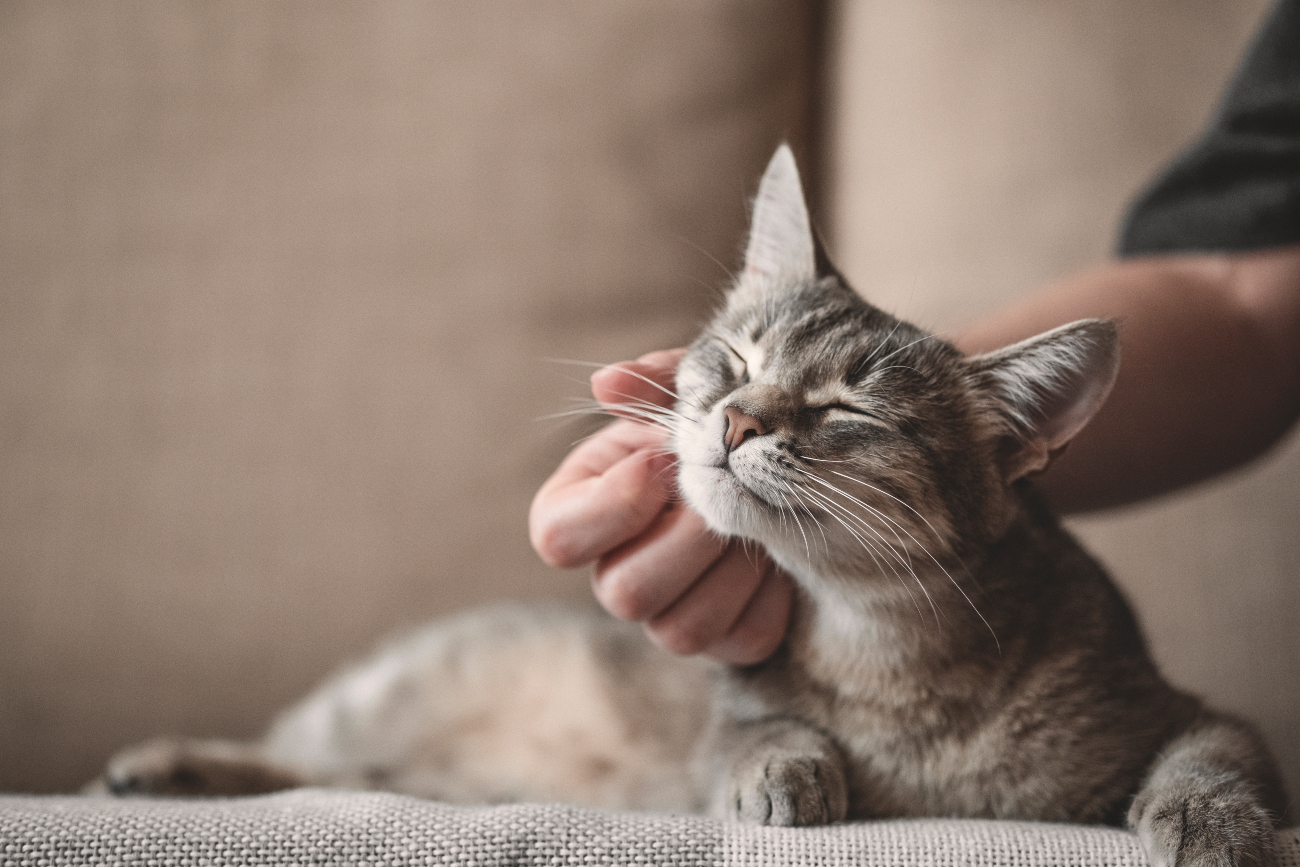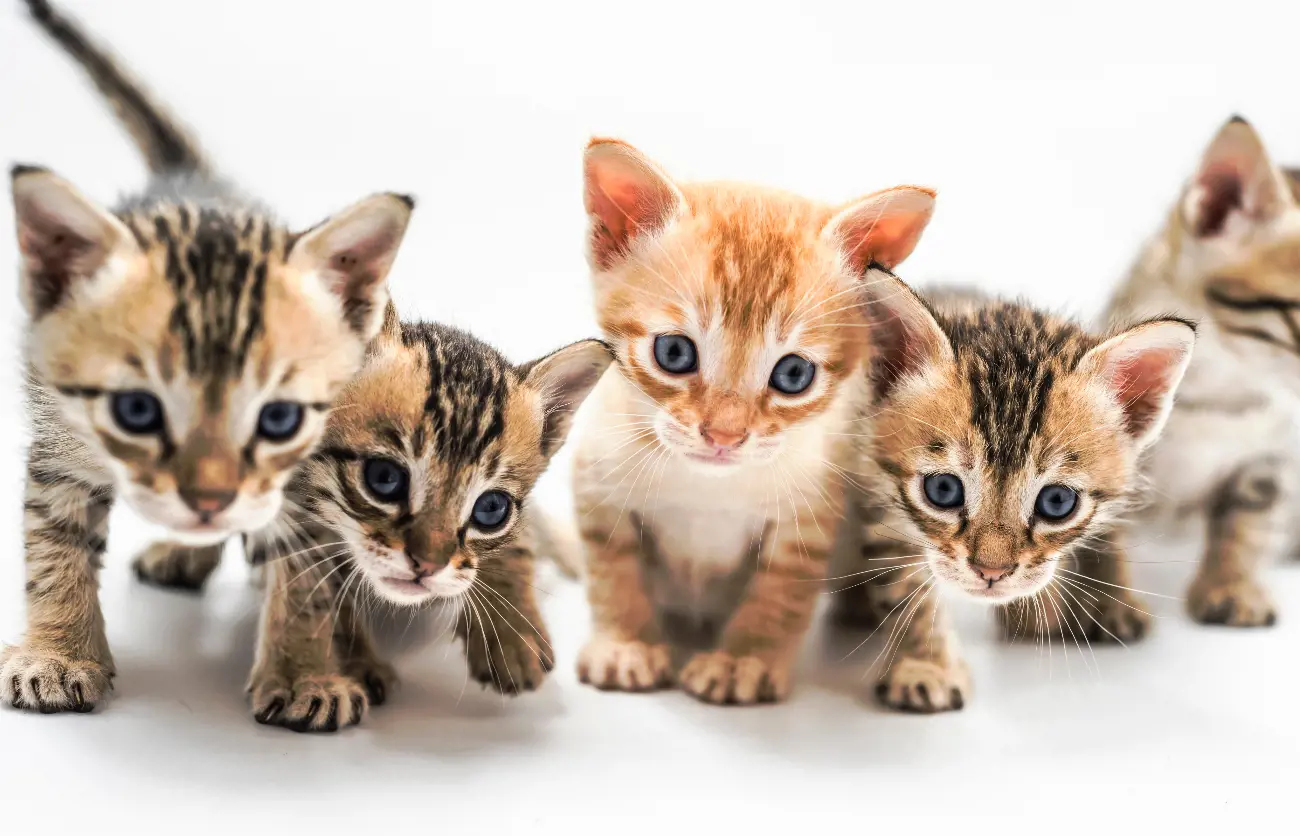How long does heat last in cats
4th July, 2024

Understanding your cat's behaviour can be quite a challenge, especially when it comes to their reproductive cycle. One question that cat owners often find themselves asking is, "how long does heat last in cats?"
In this article, we aim to provide an in-depth look into the estrous cycle of your feline friend, offering insights into the duration, specific signs, stages, and measures to manage this period in your cat's life.
What is heat in cats?
In feline terminology, "heat" signifies the estrous cycle. It's a time when female cats are open to coupling and have the possibility of conceiving. In medical lingo, this phase is known as oestrus but is often colloquially described as 'being in heat.'
When does a cat's heat cycle begin?
Female cats typically experience their first estrous cycle when they hit puberty. The onset of puberty in cats corresponds to the age of about six months on average. Nonetheless, there might be a minor fluctuation based on the season and the duration of sunlight in a day.
The specific period of the year greatly impacts cats due to their seasonal polyestrous nature which implies they undergo several cycles during their breeding phase. For felines living in the Northern Hemisphere, these cycles generally span from January to late autumn.
On the other hand, those inhabiting tropical areas or predominantly dwelling indoors can experience these cycles all year round thanks to extended daylight hours.
How long does heat last in cats?
Answering the question "how long does heat last in cats" requires a nuanced understanding of the cat's estrous cycle. In general, a cat's heat cycle lasts for multiple days, with the typical span hovering around a week. However, this duration can fluctuate between a single day to as long as three weeks.
A female feline, commonly referred to as a queen, will enter an inter-estrous phase if she does not mate during her estrus stage. This cooling-off period usually extends for approximately one week but can vary from two up to nineteen days.
Consequently, the total length of the estrous cycle in our feline friends can oscillate between one week and six weeks in duration. On average though, this cycle tends to roughly last around twenty-one days or three weeks.
Can a cat be in heat for too long?
When it comes to our feline friends, one of the most common concerns that cat owners often have is whether their pet can be in heat for too long.
The answer is yes, a cat can indeed be in heat for an extended period of time if they are not spayed. The heat cycle, also known as estrus, can last for several days to a week, and if the cat does not mate during this period, she can go into heat again in just a few weeks.
This frequent cycling can cause stress to your pet and can lead to various health issues like uterine infections and even certain types of cancer. This is why many vets recommend spaying your cat, not only to prevent unwanted pregnancies but also to protect her overall health and wellbeing.
Recognising the signs of a cat in heat
Spotting a cat in heat isn't too difficult, given the notable behavioural changes they exhibit. During the estrus phase of their heat cycle, cats tend to become highly affectionate and often demanding.
They persistently rub against their owners or objects like furniture, seeking constant attention. They tend to roll on the floor more often and become unusually vocal. Some owners may mistake these behaviour changes for a sign of illness.
A cat in heat may also exhibit changes in urination patterns, urinating more frequently or even spraying urine on vertical objects. This urine contains both pheromones and hormones, which act as signals of the cat's reproductive status to other cats.
This is why queens in heat attract tomcats (intact male cats). In some cases, the presence of tomcats around your home may be the first indication that a young cat has reached puberty.
The different stages of the estrous cycle
Understanding "how long can heat last in cats" is easier when we break down the estrous cycle into its various stages. Here's a look at the five stages that a cat goes through during a heat cycle:
- Proestrus: This stage lasts one to two days, and it is generally unnoticeable as there are no significant behavioural changes.
- Oestrus (heat): Lasting an average of seven days (ranging from 2-19 days), this is the stage where your cat will display noticeable behavioural changes and can become pregnant.
- Interestrus: This is the period in which the cat has not ovulated. This lasts between 13-18 days until the proestrus stage starts again.
- Diestrus: The diestrus phase occurs when a cat has ovulated, which happens when the female cat mates with a male cat.
- Anestrus: This is when the female cat will not experience any part of the heat cycle. This may happen due to fewer daylight hours (may not be seen in indoor cats with exposure to constant light indoors).
How many days will a cat bleed in heat?
Contrary to popular belief, when we talk about a cat being in heat, it doesn't actually involve any bleeding. Unlike dogs, female cats do not bleed during their estrus cycle, which is commonly referred to as a cat being 'in heat'.
What happens instead is an increase in behaviours such as rubbing against objects, rolling on the floor, and loud vocalisations. These are all signs of a cat being in heat.
So, the phrase "how many days does a cat bleed in heat?" is based on a misunderstanding. If you notice your cat bleeding from her genital area, it's not because she's in heat. It's a sign that something could potentially be wrong and you should seek advice from a vet immediately
When can a cat get pregnant?
During the oestrus stage of the cycle, the queen can get pregnant. Cats are induced ovulators, which means that the act of mating stimulates the release of eggs from the ovaries. Most female cats will need to have mated three to four times within a 24-hour period for ovulation to occur.
Cats have a short mating duration, taking only a minute or two, and may mate multiple times in a short period. Queens may mate with several different tomcats during this time, so it is possible that the litter of kittens may have different fathers. Once ovulation has occurred, the queen will go out of heat within a day or two.
How long is a cat's pregnancy?
The pregnancy duration in cats is approximately 64 to 71 days, averaging around 65 days, which is equivalent to nine weeks.
To notice the signs of your cat being pregnant, check out our blog on how do I know if my cat is pregnant.
Preventing pregnancy in cats
The most effective way to prevent your cat from becoming pregnant is to have her surgically sterilised (ovariohysterectomy or spay operation) before she has her first oestrous cycle.
Since it may be challenging to predict when this first heat cycle will occur, most vets recommend spaying them when the cat reaches six months of age.
Should I let my cat experience a heat cycle or have a litter before spaying?
There are no concrete reasons to let a cat have an estrous cycle or have a litter of kittens before being spayed. Cats can become pregnant on their very first estrous cycle, increasing the chances of accidental pregnancy.
Cats are indiscriminate, so this means that a brother cat may breed with its sister, a father may breed with his daughter, and a son may breed with his mother.
A common myth is that female cats will become more friendly and sociable if they are allowed to have a litter of kittens. This is not true and only further contributes to the serious problem of cat overpopulation.
How to handle a cat in heat
If your cat is not spayed and goes into heat, it can be a challenging time for both you and your pet. During this period, your cat may display behaviours such as constant, increased vocalisation, increased affection, urine spraying, trying to escape, and raising her hind quarters while flagging her tail.
It's essential to remember that these behaviours are natural and part of your cat's reproductive cycle. While it may be challenging to handle, try to be patient and provide your cat with extra care and attention during this time.
If you're worried about the possibility of your cat becoming pregnant, it's crucial to keep her indoors and away from male cats. If your cat is showing signs of discomfort or if you're having difficulty managing her behaviour, seek advice from your vet.
The importance of spaying your cat
If you're seeking a permanent solution to the question, "how long is a cat in heat?", then spaying your cat is the answer. Spaying your cat not only prevents her from going into heat but also offers several health benefits.
Studies show that spaying a cat reduces her risks of developing mammary cancer and completely eliminates the risk of uterine infections. Furthermore, spaying your cat contributes to the effort to control the cat population, reducing the number of cats and kittens that end up in shelters.
Spaying a kitten before her first heat cycle can prevent her from having to look after a litter, as kittens as young as four months old can become pregnant. Pregnancy, especially unwanted pregnancy, can be risky for a cat, and with millions of cats and kittens seeking forever homes in shelters, it's a risk not worth taking.
In conclusion

Understanding the estrous cycle or heat cycle in cats can help you better care for your pet during this time. Remember, the best way to handle a cat in heat is to provide her with plenty of care and attention, keep her indoors, and consult with your vet if you have any concerns.
If you're looking for a long-term solution to prevent your cat from going into heat, consider spaying your cat. Not only does it prevent your cat from going into heat and getting pregnant, but it also offers several health benefits and contributes to controlling the cat population.
Lastly, don't forget to consider getting insurance for your cat. For a cat insurance quote, you can visit our website and get a quote online. If you'd like to talk to one of our cat insurance team, you can get in touch with us on 0330 102 5748.
Your cat's health and wellbeing are of utmost importance. By understanding their reproductive heat cycle and taking appropriate measures, you can ensure that your cat leads a healthy and happy life.
Helpful Pages
Recent Posts
Pet Insurance Quote
- 98% claims paid *
- Claims paid directly to vets
- 24/7 vet video consultations
- Interest free monthly payments




